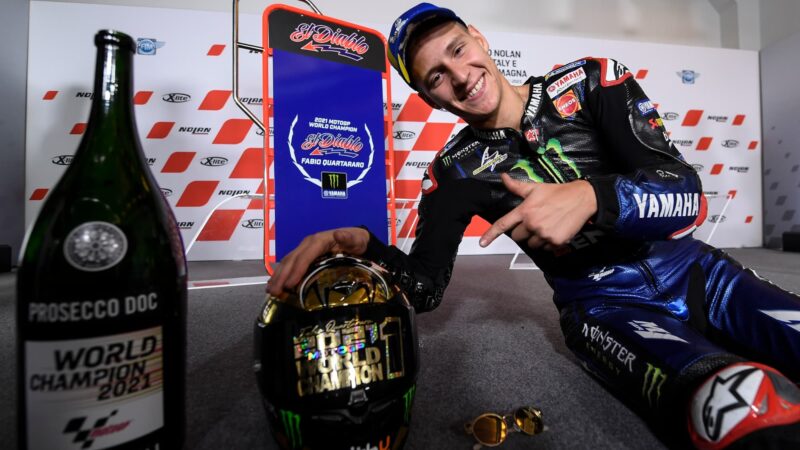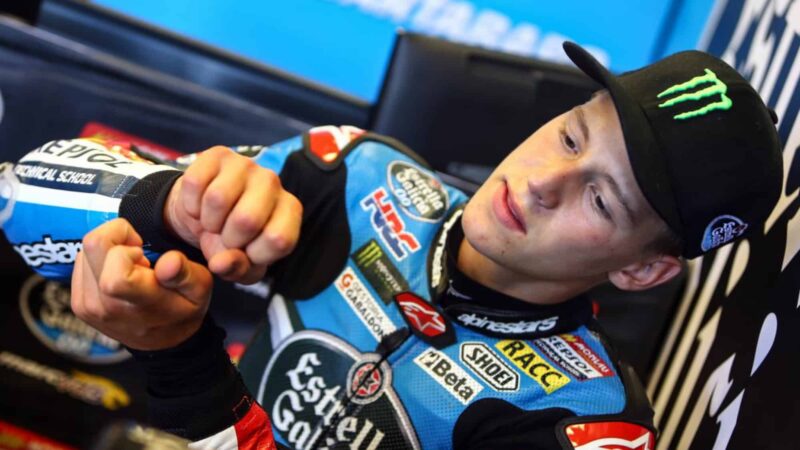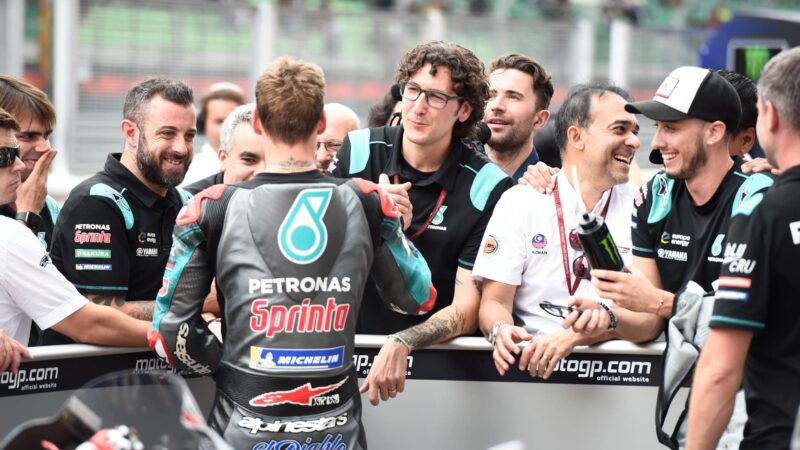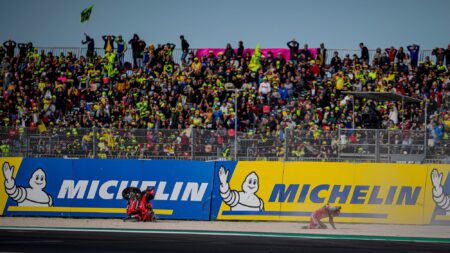He would surely be Márquez’s biggest challenger in 2020 and when he won the first two races, while Márquez crashed out, it seemed he would win the championship.
But Yamaha’s 2020 YZR-M1 wasn’t up to it. A crucial change in machine balance had made the bike super-sensitive to track layout and weather conditions – Quartararo was up front one weekend and nowhere next, which is no way to win a championship.
This year’s M1 is essentially a clone of the 2019 bike and Quartararo has been unerringly consistent: five victories so far, at Losail, Portimao, Mugello, Assen and Silverstone (all flowing racetracks, not by coincidence), five further podiums and only two finishes outside the top six – 13th at Jerez, where he led until arm pump slowed him, and eighth at Aragon, where he was slowed by a mystery glitch.
And his riding is something to behold. Quartararo is now more animated and aggressive on the bike than ever – he dances all over his M1, transferring load between the front and rear tyres to generate grip and reduce wear. He leans far, far off the bike to spirit it through corners and knows that it’s down to no one but him to squeeze everything from his M1. He doesn’t expect the bike to do it for him.
“My riding has changed a lot since I came to MotoGP,” he explained. “In 2019 I looked a lot like [Jorge] Lorenzo, I looked like I was slow, but this year when I’m on a fast lap I feel I’m on the limit and you can see this on the TV. In these years a lot has changed with the Yamaha, so I need to be more aggressive on the bike.”
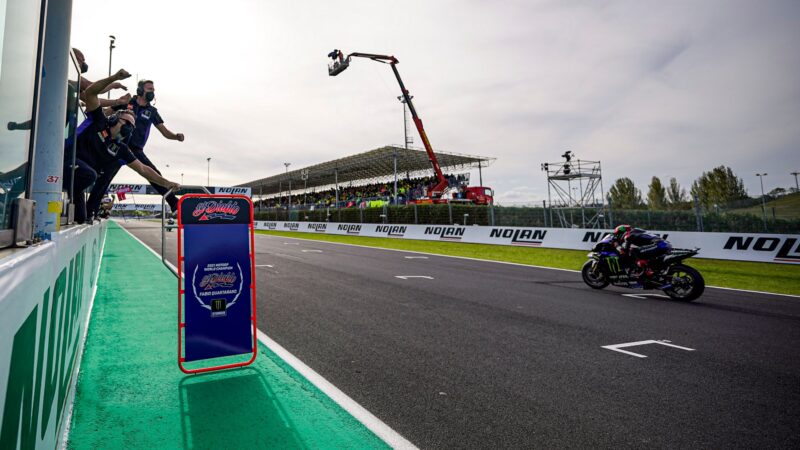
Quartararo made history when he took the chequered flag at Misano – France’s first MotoGP champion
Significantly this is also Yamaha’s first MotoGP crown since the arrival of spec software and Michelin tyres in 2016. It took the Iwata engineers longer to adapt their bike to the new kit than their rivals at Honda, Ducati and Suzuki.
Qualifying has always been a Quartararo strong point – few people are better at extracting the maximum from a fresh set of tyres over two or three laps. So far he’s scored 15 pole positions to his eight race wins and this year he started all but two of the first 16 races from the front row.
A good grid position has always been important, but never more so than now, because all the motorcycles have such similar performance that the racing is tighter than ever and it’s never been more difficult to overtake.
This is particularly true of the M1, which needs a clear track to carve its fast, flowing lines that are the secret to its speed. Once the M1 gets mired in the pack it’s unable to carve those lines and its lack of straight-line grunt doesn’t help in overtaking rivals.
Quartararo knows this and his qualifying performances are a cornerstone of his title success, just like they were when Lorenzo won Yamaha’s last world title in 2015, when he started from the front row at 14 races, against Rossi’s five front rows.
Quartararo has a bit of Rossi in him – always having fun and (very nearly) always smiling, so he’s a likeable young man. He’s MotoGP’s most flamboyant world champion since the Italian veteran and like Rossi he knows how to have a good time.
He certainly didn’t take long to switch into party mode after securing the title at Misano on Sunday, which came as a bit of a surprise, because he hadn’t expected to be crowned until Portimao at the earliest.
“I’m still on the cloud – the title came so soon,” he grinned during his media conference.
He was on cloud nine, at the very least, by this point. Still wearing his leathers and undergoing interrogation by journalists he leaned over and took a huge slug from the jeroboam of prosecco sat by his side.
“Ah, this is good!” he smiled.
Once the media conference had finished he took an even bigger slug of prosecco, turned to the journalists, grinned and announced, “Today will finish in a bad way, I can tell you!”
